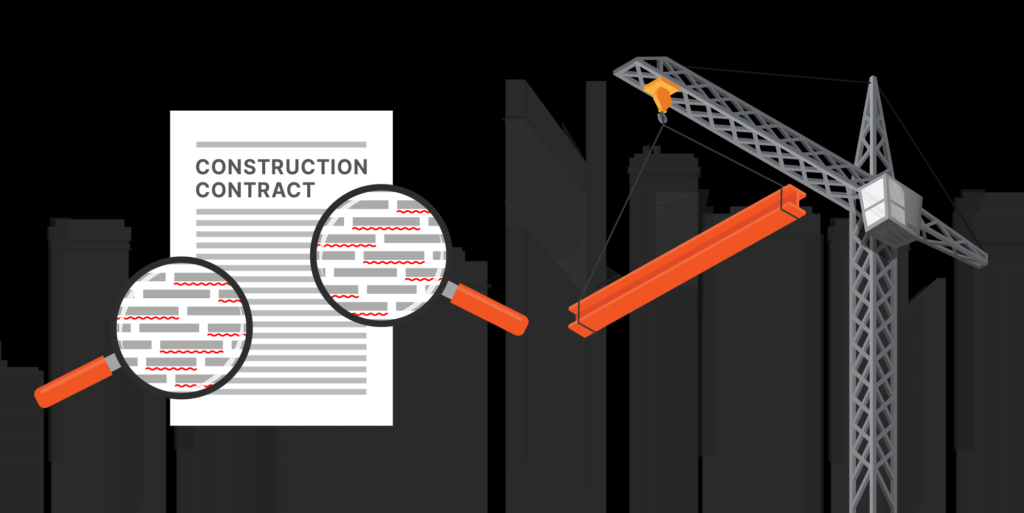— 10 min read
AIA A305 Contractor’s Qualification Statement Explained


Last Updated Oct 3, 2025

Alisa Schneider
AIA Contract Documents
Alisa D. Schneider, Esq. is Manager and Counsel on the AIA Contract Documents team. Utilizing over 16 years of professional construction and legal expertise, Alisa works with the AIA Documents Committee to create and revise AIA Contract Documents’ standard form agreements and associated material.

Kristen Frisa
Contributing Writer
112 articles
Kristen Frisa is a contributing writer for Procore. She also contributes to a variety of industry publications as a freelance writer focused on finance and construction technology. Kristen holds a Bachelor of Arts in Philosophy and History from Western University, with a post-graduate certificate in journalism from Sheridan College. She lives in Ontario, Canada.
Last Updated Oct 3, 2025

In construction, project owners use Requests for Qualifications (RFQs) to narrow down a list of contractors to find candidates who meet the criteria to bid on a specific project.
The AIA Document A305-2020 Contractor's Qualification Statement helps owners and general contractors to determine if a contractor has the background, financing and resources to handle an upcoming project. This article will discuss the contents of document A305, how it is used in the construction industry and best practices for utilizing this document on projects.
Learn more about RFQs in construction.
Table of contents
Understanding the A305
The Contractor Qualification Statement is similar to a job application that contractors submit to owners and general contractors before or during the bidding process. For a company to get hired to perform a task, they need to go through a screening process that proves they can do the work asked of them.
By using the A305 form, owners or contractors may better understand the contractors they're considering working with. When embarking on construction projects worth millions of dollars, the ability to predict a contractor's likelihood of success is a significant advantage.
Assessing Qualifications & Capabilities
Judging a contractor’s ability and experience with only a few documents can be a challenge. Document A305 doesn’t necessarily prove capability by itself — it offers owners and GCs a chance to evaluate contractors based on the same set of information.
For example, consider an owner with an upcoming $2 million dollar commercial project who wants to ensure the involved contractor has a specific skill set related to sustainable construction. The owner would reach out to industry contacts for recommendations and then compare the recommended construction firms based on a uniform set of information, vetting up to three or four applicants for a job.
When owners require candidates to fill out A305 documents, they have an organized set of information that allows them to uniformly evaluate the different companies.
Sections of the A305 Document
The contractor’s qualifying statement contains a main document and a series of exhibits that requesters can use to gather information from contractors. Depending on their needs, requestors can ask contractors to include any of the exhibits — or none of them.
The A305 is modular in nature, meaning users can attach multiple or different exhibits according to what they require for upcoming projects. This allows owners and contractors to use the parts of the document to best fit their needs.
The A305 Main Document
The A305 Main Document identifies itself as a contractor qualification statement and amounts to a sworn statement that the information included with the form is not misleading. This doc requires the submitter to identify themselves with their organization name and address, as well as the organization and address of whom they are submitting it. In addition to signatures from the organization's authorized representative, this document also requires a signature from a notary.
Some owners or contractors modify the A305 to fit their risk profile better or to include something more pertinent to their current situation. Through this modification, the A305 becomes a very flexible document. Still, in its original, standardized form, the document emphasizes the accuracy of information gathered through it.
Exhibits
Along with the A305, the contractor should attach required information as exhibits, and indicate on the form the documents included with the submission.

Exhibit A – General Information
Exhibit A requires general information about the contractor, such as the business name and registration number, the work the firm is currently undertaking, what types of construction the firm seeks out, and examples of its past work.
Owners may take for granted that the name a contractor uses is also a legal business name, but that's not always the case. The owner should know each contractor's full legal business name to ensure they have covered all possible liabilities on a project. At the very least, owners should use a business entity search to ensure the contractors they hire are licensed to practice business in the project state. If they're not, the owner may miss some legal protections otherwise afforded.
Depending on the project at hand, or the owner's knowledge of the contractor, Exhibit A may be the only exhibit the owner requests from the contractor – simply using the submitted documents as an organized list of the contractors working a job and their legal business names.
Exhibit B – Financial and Performance Information
Exhibit B requires more information about a contractor's financial standing and performance as it relates to construction performance. It details the contractor's revenue and any active disputes. It is not uncommon for a contractor in the construction industry to be dealing with some kind of litigation. Exhibit B allows owners to identify what kind and severity of disputes a contractor is involved in.
Awareness of the current disputes a contractor is involved in can help owners understand if those legal and financial issues can impact the upcoming project. If a contractor is involved in a significant number of disputes, that may warrant a conversation between the owner and the contractor to find out if they signal a threat to the project.
A contractor filling out Exhibit B for an upcoming project may consider flagging the document as confidential so that an owner can't share that sensitive information with anyone else.
Exhibit C – Project-Specific Information
Exhibit C allows owners to find out the specific ways that a contractor plans to work on an upcoming project. For example, suppose a contractor has offices in two different states. In that case, the owner will want to know which office will be managing the upcoming project, as it may impact communications, travel time, and other aspects of the project.
A contractor managing a project out of a distant office location isn't necessarily negative, but it may bring in nuances to the project operations, so the information is useful to assess what the interactions with the contractor may look like.
The owner will use Exhibit C to find out about the key personnel that the contractor may place on the upcoming project to reassure the owner that skilled and knowledgeable people will be put on the job.
Exhibit C also seeks information about a contractor's safety performance and insurance coverage. A specific project may require a specific type of insurance, like commercial or professional liability. A contractor's ability to hold that insurance and the upper limit of coverage may impact the firm's ability to work on a project.
Exhibits D and E – Past Project Experience
Contractors and project owners use Exhibits D and E for the same purpose: Both exhibits offer a place to give more information about a contractor's past performance so that an owner can call past clients and do their background checks.
Both exhibits ask for details about project name, location, type, owner and architect — as well as the project delivery method used.
Evolution of the A305
Each document in the AIA Contract Documents’ repertoire is evaluated, updated, and published through a ten-year cycle in order to be most valuable to the owners and contractors who use it. The most recent iteration of the A305 was released in 2020.
BIM
The first addition to the 2020 edition is information about a contractor's experience and comfort level with Building Information Modeling (BIM). If an upcoming project involves heavy use of BIM, it will be necessary for the contractor to be adept at using it. If not, the project could experience significant interruptions.
Small Business Concerns
A second change involves recognition of small business concerns that the owner could list to access government money on a public or semi-public project. The A305 now allows contractors to note small business concerns like women- or veteran-owned businesses or hub zone businesses.
Flexibility of Use Through Modular Construction
The A305 used to be a single, large document. Its structure as a single document with optional exhibits is new to its most recent iteration. The new A305 is created to be as flexible as possible to fit a variety of different projects, owner needs, and situations. The document's flexibility lies in its modular construction. Owners and contractors who find the A305 to be very involved, complicated, or repetitive must understand that it's not necessary to use all exhibits for each project. Each exhibit is offered as a way to make the A305 more customizable.
The A305 doesn't have to be used all at one time, either. An owner may send out A305s to create a listing of potential contractors for a number of upcoming projects. At that point, the owner may simply send out the A305 form with no exhibits because, at that point, that's all the information the owner requires. The owner may go back to that collection of forms later on when project specifics are established and send out specific exhibits to the contractors depending on the specifics of the projects they will work on.
NOV 6, 2025 at 11:00 AM PST / 2:00 PM EST
Free Webinar: Prove your project management software is profitable
Join Procore and Dodge Data & Analytics for a 2025 Dodge ROI Report deep dive.

Best Practices for Using the A305
In most cases, owners or contracting firms request that contractors fill out an A305 for consideration for an upcoming project. However, the A305 asks some important questions of subcontractors that may be helpful to consider even between those requests.
For example, a contractor who keeps an up-to-date list of certifications and licensure the business has achieved could work to fill in gaps in its workforce's skills and knowledge, which could mean the difference in winning future projects. Contractors who are aware of their strengths and weaknesses may also be better adept at marketing themselves to projects that fit them.
Owners: Be clear about expectations.
When owners send out requests for A305 submissions, they should set clear expectations with contractors about what they require and when they need it. Owners should detail which forms or exhibits should be attached, as well as set a submission due date.
Suppose a requester simply asks for a qualification statement along with any marketing flier or booklet a contractor may already have to show their capabilities. In that case, they should set a page limit to reduce the likelihood of multi-hundred-page documents coming their way from each candidate.
Owners should also specify the means by which they hope to receive submissions of the A305, be it by mail, email, or fax.
Contractors: Represent qualifications accurately.
Contractors should strive to be as truthful as they can about their experience and capabilities when filling out an A305. If a contractor or subcontractor is chosen for a job and then turns out unable to perform the work, the owner could seek legal recourse to show the contractor made untrue statements on the A305 documents.
However, A305 documents are not often incorporated into contracts. If project work begins to suffer and the contract is terminated, the A305 won't be considered as the reason for its termination. Instead, the cause of the termination will be put down to default or some other cause.
Adapt to individual cases as necessary.
The A305 is a template to be used however best suits a requester's needs. If there is past project experience that would benefit a coming project, be sure to ask for it specifically. Owners may want to specify what kind of process contractors have used in past project experience if they're looking for contractors adept at that process.
The A305 helps owners and contractors.
Each of AIA Contract Documents’ standard form agreements is created to work for all the construction professionals who may use it. The A305 is no different. The A305 benefits owners by giving them a set of uniform metrics by which to compare different contracting businesses.
For contractors, the A305 levels the playing field so that they can be compared with other contractors on the metrics that really matter to a specific project, and allows them to emphasize what they see as their strengths.
It is always important for contractors to be truthful in their answers, but they should also be thoughtful about how best to present themselves. The A305 allows contractors to identify their strengths and accomplishments that may help them shine in relation to their peers. A lesser-known contractor judged against a more well-known contractor may sometimes fall short on reputation, but the A305 allows them to be vetted on the same level to help them win projects that they may not have had the opportunity to do otherwise.
Was this article helpful?
Thank you for your submission.
100%
0%
You voted that this article was . Was this a mistake? If so, change your vote
Scroll less, learn more about construction.
Subscribe to The Blueprint, Procore’s construction newsletter, to get content from industry experts delivered straight to your inbox.
By clicking this button, you agree to our Privacy Notice and Terms of Service.
Thank you!
You’re signed up to receive The Blueprint newsletter from Procore. You can unsubscribe at any time.
Categories:
Written by

Alisa Schneider
AIA Contract Documents | Manager and Counsel
Alisa D. Schneider, Esq. is Manager and Counsel on the AIA Contract Documents team. Utilizing over 16 years of professional construction and legal expertise, Alisa works with the AIA Documents Committee to create and revise AIA Contract Documents’ standard form agreements and associated material.
View profile
Kristen Frisa
Contributing Writer | Procore
112 articles
Kristen Frisa is a contributing writer for Procore. She also contributes to a variety of industry publications as a freelance writer focused on finance and construction technology. Kristen holds a Bachelor of Arts in Philosophy and History from Western University, with a post-graduate certificate in journalism from Sheridan College. She lives in Ontario, Canada.
View profileExplore more helpful resources

Using Standard Operating Procedures for Better Contract Management
Every construction project is different, meaning that GCs have to be continually agile and strategic about applying their experience. Major categories change from project to project, from the owner to...

Understanding Supplementary Conditions on Construction Contracts
No two construction projects are exactly alike — and the same goes for construction contracts. Even when using a standard contract form, owners and contractors sometimes use supplementary conditions to...

A Straightforward Guide to Construction Contract Review
Construction contracts are like the glue for the project team. They’re the ties that bind the working relationships and goals for the project, containing information about responsibilities, liabilities and processes...

Escalation Clauses in Construction Contracts: When and How They Apply
In construction contracts, an escalation clause allows for the escalation of a certain price for labor or materials to be used in a construction project. This type of clause is most...
Free Tools
Calculators
Use our calculators to estimate the cost of construction materials for your next project.
Templates
Find a template to help you with your construction project tasks.
Material Price Tracker
Get the latest U.S. retail prices and view historical trends for common building materials.
Glossary
Explore key terms and phrases used in the industry.
